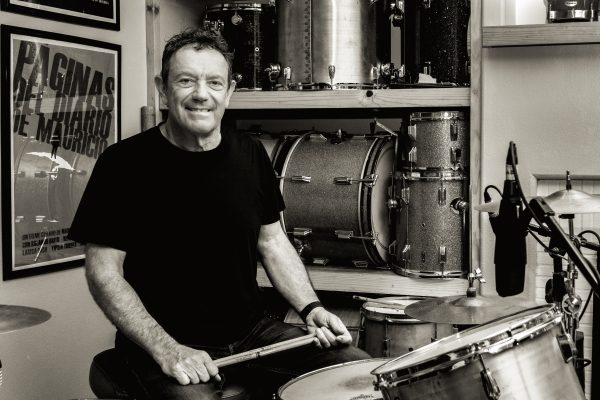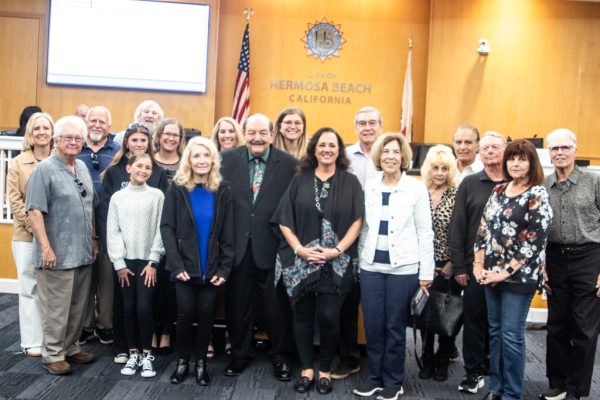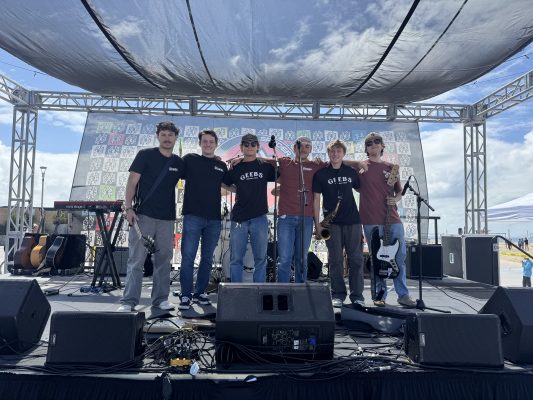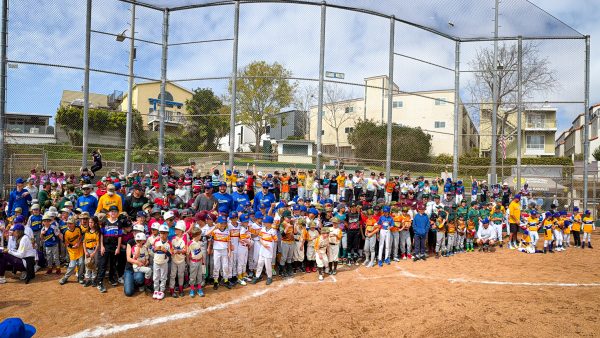
“Eat” is an artistically tasty treat from ESMoA
In Albrecht Dürer’s famous 1523 woodcut, “The Last Supper,” the meals haven’t yet arrived and the apostles look a tad bored. Let’s begin by feeding them, and taking a few lines from “The Sentimental Education,” by Gustave Flaubert: “For the first course alone, there was a sturgeon’s jowl moistened with champagne, a York ham cooked in Tokay, thrushes au gratin, roasted quail, a vol-au-vent Bechamel, a saute of red-legged partridges, and at either end of this spread a dish of potato straws mixed with truffles.”
The Dürer print is among the appetizers in “Eat,” the exhibition now open at ESMoA in El Segundo. It’s a food-themed art show, of course, but as usual it’s something more as well.
What we eat sustains us. It’s the fuel that gives us energy. At the same time, cooking and food preparation is an art form. “Eat” not only depicts food on platters at the table, but considers food production and healthy nutrition as it drives and affects a ravenously hungry and expanding human population.
The show is curated by Dr. Bernhard Zuenkeler with assistance by Holly M. Crawford. Both of them answered questions as to how “Eat” germinated and grew, and what it hopes to inspire among viewers.

The idea for the show emerged eight months ago at a meeting with ESMoA’s board of directors.
“I immediately thought of L.A.-based artist Patrick Martinez and his cake sculptures,” Crawford says. “They look like an average sheet cake you would see at a birthday party or your local bakery.” The difference is that “they have images of the artist’s friends, and rappers like Kendrick Lamar and Tupac. The artworks look good enough to eat and are celebratory and melancholy at the same time.” After this, she adds, “I began connecting with other artists in L.A. whose work echoed some of these themes.”
Other works, Zuenkeler points out, were borrowed from private collections, the Eva and Brian Sweeney Collection among them. That’ll explain the Dürer and some of the older works.
With a life devoted to art, Zuenkeler had certain images come to mind when the ideas for “Eat” began to crystalize. “Well, there are those magnificent Golden Are Dutch still lifes that have fascinated me since childhood in the Rijksmuseum in Amsterdam.” Some of the representations are so accurate that birds have pecked at the canvases, it has been said. “But the beauty of this experience is that everybody brought their own ideas to the table.”
The list of participating artists is varied and diverse, spanning the centuries, and includes Jo Ann Callis, Jasper Johns, Johann Wilhelm Preyer, Michael Sistig, Wayne Thiebaud, Andy Warhol, Ai Weiwei, Carole Bayer Sager, and John Van Hamersveld, to name but a few.

The latter, a sari-sari store, is patronized by locals “in need of necessities they may have run out of or need in a small and affordable amount.” But these stores are also “spaces for personal interaction, a spot to catch the bus or grab a treat… an extension of the connective community spirit.” Chao has been commissioned to recreate one for the exhibition, and visitors will even be able to make purchases from it during the exhibition.
“Let’s Talk About Food” (details to come) will be an open and casual discussion about food stores and food sustainability not only in Los Angeles but around the world.

As João Ubaldo Ribeiro wrote in “Sergeant Getúlio,” “hunger is the best spice.” Towards that end there will be other related discussions and hands-on workshops, such as one with Karla T. Vasquez, whose forthcoming cookbook, “SalviSoul,” contains the culinary tales of Salvadoran women, thus preserving them for future generations.
“We all have a food story to share,” Crawford says, “and Karla’s workshop will encourage participants to explore their personal relationships to food.”
In March, another Karla, Karla Diaz, will stage an in-gallery performance of “Prison Gourmet,” the result of her working with inmates and collecting their recipes. The artist, Crawford says, “will recreate one of the prison recipes and give samples of the dish to the audience.” The project “encourages visitors to think about the politics of food and resistance.”

“The neat thing about (this exhibition),” Crawford says, “is that each artist explores ‘eat’ and ‘food’ in very personal ways, and those explorations resonate in very personal ways.” Especially in juxtaposition with one another. That should be the fun and enlightening part.
“If I learned one thing, Zuenkeler says, “it’s this: You can never learn enough about food!” While researching for the exhibition, he and several others even went to Chinatown in downtown L.A. and received some medicinal advice about food “I never envisioned to eat. Lots to laugh about and lots to learn!”
Eat, curated by Bernhard Zuenkeler with assistance by Holly Crawford, is on view through May 18 at ESMoA, 208 Main St., El Segundo. Hours, Thursday from 1 to 8 p.m. plus Friday and Saturday from 10 a.m. to 5 p.m. Free. (424) 277-1020 or go to ESMoA.org. ES











